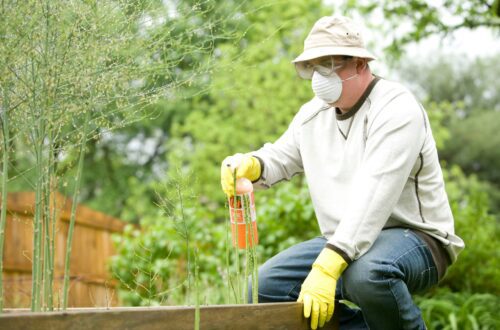Nematodes that attack the roots of vegetables, flowers, weeds and woody plants cause symptoms that can be confused with drought stress, poor nutrition or root rot. Because nematode damage is not visible above ground, testing is the only way to determine a problem’s severity.
The good news is that there are ways to reduce nematode numbers. Crop rotation and soil health methods are effective, inexpensive and easy to implement.
Crop Rotation
Using crop rotation, planting different crops in specific areas each year prevents disease and pests from becoming accustomed to the soil. Producing a single crop year after year uses up the nutrients in that soil and allows pathogens to build up to damaging levels.
The best practice is to rotate to a non-host crop for two years. This technique is particularly effective against root-knot nematodes. Follow with a legume such as green beans, southern peas or peanuts for the next two years. These plants are nitrogen “fixers” and also reduce nematode populations.
Carrots are susceptible to root-knot nematodes and often produce short, forked or stunted roots. However, nematode feeding on carrots rarely reduces the pounds of carrots grown by home gardeners. If carrots are left in the garden after they stop producing, nematodes will continue to reproduce and lay eggs, which can cause a severe problem with subsequent plantings. To prevent this, kill your carrots as soon as they are done producing. You can either till up the root system or add it to a compost pile for destruction by heat.
Tilling
If you have a lawn with yellow areas and weak growth, it may be due to nematodes. Above-ground symptoms are usually not seen but may include swollen leaves or a general lawn wilting. Signs can also be found in garden plants like begonia, cyclamen, ferns, and strawberries. The lower leaves of these plants may have swollen knots or a distorted appearance, and the stems will cling together.
Home gardeners often need to learn the problems caused by nematodes and need better aesthetics and yields. However, some methods can be used to minimize the impacts of nematodes on garden and vegetable crops. Crop rotation, using resistant vegetables, fallowing or flooding growing areas, and solarizing soil are good ways to manage nematode populations. Nematodes cannot be eliminated from a site, but they can be kept under control. This will result in a better garden or lawn and greater productivity.
Oyster Shell Flour
The calcium carbonate in oyster shells is a natural soil amendment and provides numerous plant benefits. It helps balance pH levels, improves fertilizer uptake and enhances soil structure. It also stimulates essential enzyme activity and increases the cation exchange capacity (CEC).
Many gardeners find that using crushed oyster shells as mulch effectively controls nematodes in vegetable gardens. A quarter cup of shots incorporated into the soil at planting time can help keep nematode populations low for several seasons.
Clean fallowing, in which fields are left completely vacant of any crop for several months, has been shown to starve nematodes by depriving them of a food source. However, this method is detrimental to soil through erosion and removing organic matter, so it should be used sparingly. In addition, nematode numbers tend to rebound quickly with this method. A cover crop should be planted to prevent a rebound in nematode populations.
Black Walnut
Black walnut (Juglans nigra) is a tall tree native to eastern North America, valued for its decorative dark, fine-grained wood used for furniture and paneling. It is also cultivated for its edible nuts, harvested in September-October and has a distinctive nutty flavor.
Certain plants emit toxins that suppress nematode populations. A few examples include marigolds (Tagetes patula var. Nemagone), chrysanthemums (Chrysanthemum moriflorum), castor beans (Ricinus communis) and velvet beans (Mucuna pruriens). These species are good options for cover cropping or for planting in solid beds.
Other nematode control strategies include using a good weed management program, soil aeration and proper fertilization. Many nematode symptoms are due to nutrient deficiencies, so keeping your garden healthy through good composting and adequate soil aeration will aid in root health and alleviate symptom expression. Proper fertilization with ample potassium is especially helpful. Also, avoid leaf-to-leaf contact with susceptible plants and reduce overhead irrigation, which can spread foliar nematode symptoms.






